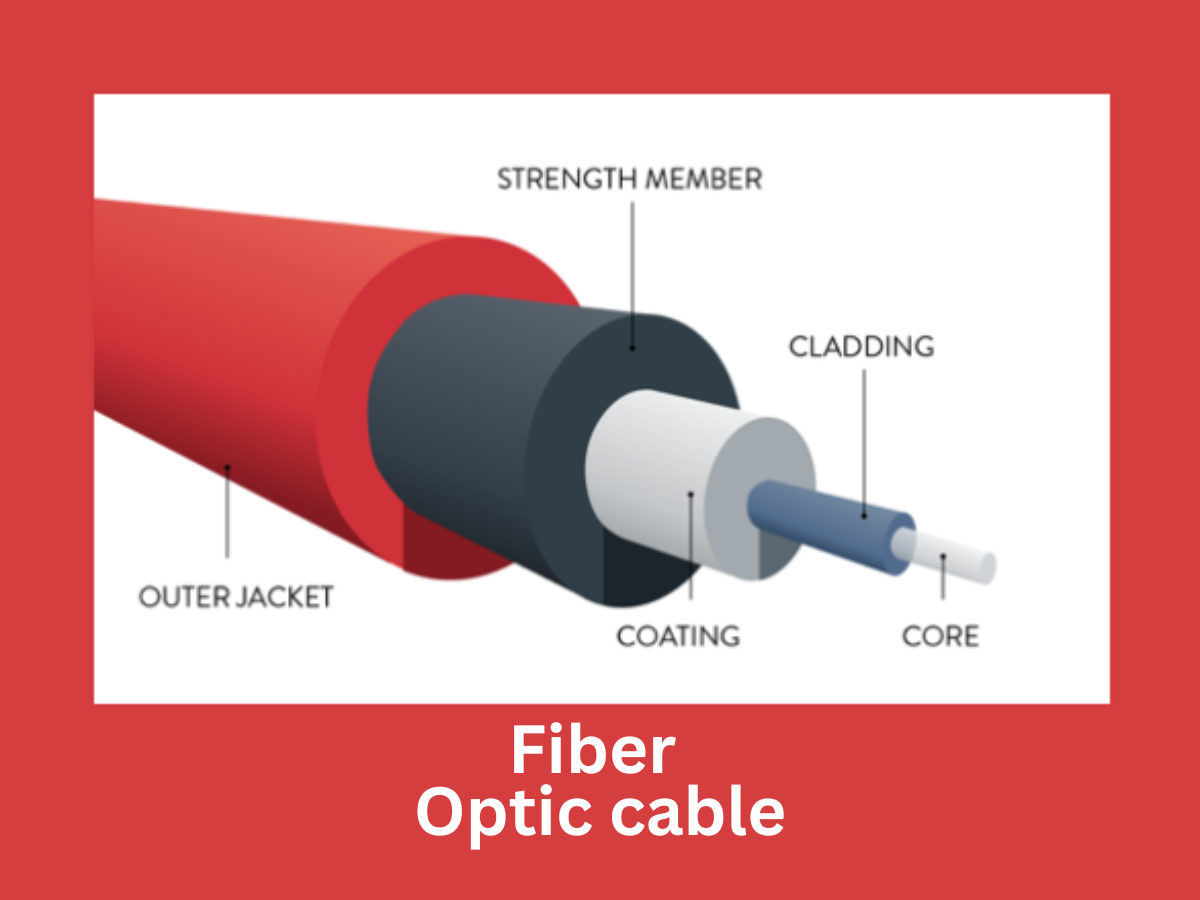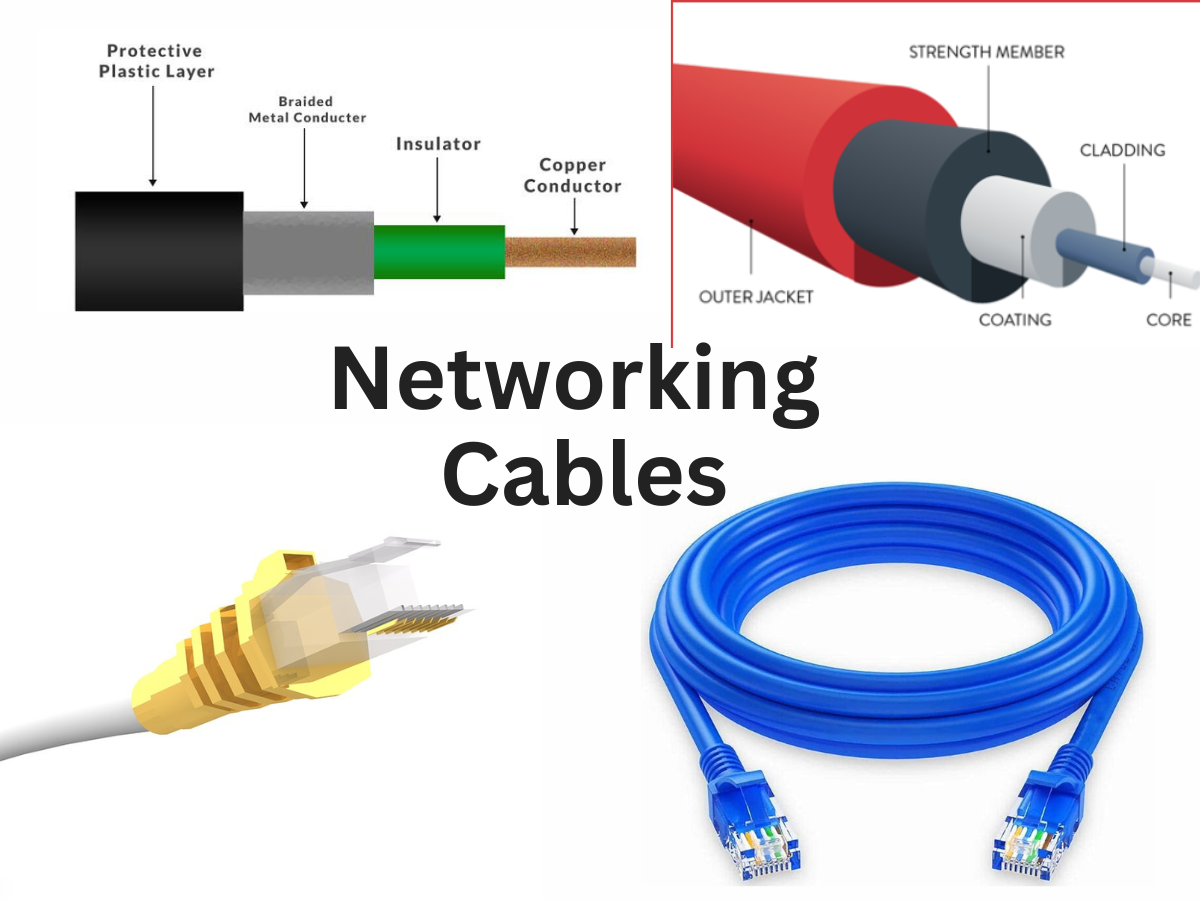Networking cables are essential to communication in the digital age we live in, as connectivity is critical. A networking cable is a piece of hardware used to link two or more computers together to share devices like printers and scanners, or to connect one network device to another. Depending on the topology, protocol, and scale of the network, several types of cables are utilized, including coaxial, optical fiber, and twisted pair connections.
Different Types of Networking Cables
- Ethernet Cables
- Fiber Optic Cables
- Coaxial Cables
Ethernet Cables: The Backbone of Wired Networks
Probably the most widely used kind of networking cable is Ethernet cables, which are frequently used to link devices in local area networks (LANs). There are other types of these cables, such as Cat5, Cat6, and Cat7, with varying performance levels and speeds. For instance, Cat6 and Cat7 cables offer even larger bandwidths than Cat5 cables, supporting rates of up to 1000 Mbps. As a result, they are perfect for demanding applications like online gaming and video streaming.
Construction
Copper wires braided into pairs and covered in an outer jacket make ethernet cables. The twisted pairs’ reduction of electromagnetic interference and crosstalk ensured reliable data transmission.
Connectors
Ethernet cables commonly utilize RJ45 connections, which resemble bigger RJ11 telephone connectors. Ethernet ports of gadgets easily accommodate these eight-pin connectors.
Speed and Range:
An Ethernet cable’s maximum supported data transfer speed and range are determined by its category. For instance, Cat6 and higher connections can handle higher speeds and longer distances than Cat5e cables, which can only support rates of up to 1 gigabit per second (Gbps) at lengths of up to 100 meters.
Shielding:
For protection against electromagnetic interference from adjacent electrical equipment or outside sources, certain Ethernet cables have extra shielding. Unshielded twisted pair (UTP) cables lack the additional layer of shielding that surrounds the twisted pairs in shielded twisted pair (STP) cables.
Usage:
When there is a need for a dependable wired connection, people frequently use ethernet cables in homes, workplaces, data centers, and other networking contexts. They offer quicker and more reliable network speeds compared to wireless connections.

Fiber Optic Cables: The Power of Optical Transmission
Fiber optic cables, which use light signals to transmit data over great distances with very little attenuation and almost no electromagnetic interference, provide the ultimate in high-speed data transmission.
Because of their improved performance and adaptability to electromagnetic interference, these cables are gradually taking the place of copper cables in data centers, telecommunications networks, and high-speed internet infrastructure.
Construction:
Multiple parts make up fiber optic cable:
Core: Light passes through the innermost portion of the fiber optic cable, known as the core. Plastic or glass makes up the core, which transmits light signals.
Cladding: The cladding, which is a layer of plastic or glass with a lower refractive index than the core, surrounds the core. By reflecting light into the core, the cladding aids in confining it there.
Buffer Coating: A covering of defense that gives the fiber mechanical strength and protection around the cladding.
The outermost layer of the cable, known as the outer jacket, offers an extra defense against environmental elements like moisture, abrasion, and impact.
Types
Fibre optic cable comes in two primary varieties:
Single-mode fiber (SMF): Made to transmit light with the least amount of signal loss over extended distances. Because of its reduced core diameter, which is usually about 9 microns, only one mode of light may pass through the fiber.
Multi-mode fiber (MMF): Suitable for applications requiring less bandwidth and shorter distances. Its larger core diameter typically between 50 and 62.5 microns—allows for the propagation of several light modes via the fiber.
Optical Connectors: To link fibers and enable the transmission of light signals, fiber optic cables use specialized connectors. SC (Subscriber Connector), LC (Lucent Connector), ST (Straight Tip), and FC (Fiber Connector) are examples of common connector types.
Advantages:
- High Bandwidth
- Low Signal Loss
- Immunity to Electromagnetic Interference (EMI)
- Security

Coaxial Cables: Equality of Cost and Efficiency
Coaxial cables combine performance and cost-effectiveness harmoniously. Their unique characteristic is the core conductor, encased in insulating layers and protective shielding. Coaxial cables continue to be used in cable television (CATV) networks, broadband internet connections, and surveillance systems, despite not being as fast as fiber optic cables. This is because they are reliable, affordable, and suitable for sending data and video signals over long distances.
Construction:
Coaxial cable consists of multiple layers. The central conductor usually consists of copper in this part of the electrical signal.
We place insulation around the shield and the central conductor to stop electrical interference.
Metallic Shield: Typically composed of copper or aluminum, the shield aids in signal containment within the cable and offers defense against electromagnetic interference (EMI).
The outer insulating layer provides additional insulation and safety for the cable.
Types:
Coaxial cable is available in several types designed for different applications, including RG-6, commonly used in satellite and cable TV (CATV) setups. It can handle longer distances and carry higher frequencies than RG-59 since it has thicker insulation and a center conductor.
Applications:
Internet data, television signals, and other high-frequency signals are all sent via coaxial cable. It is frequently found in cable distribution networks, telecommunications systems, residential and commercial structures, and surveillance systems.
Benefits:
Coaxial cable has several benefits, such as
It is suitable for environments with high electrical noise levels because of its strong resistance to electromagnetic interference.
able to transmit high-frequency signals across extended distances with little loss of transmission.
robust design, with an external insulating layer that guards against environmental influences and physical harm.

Comparing Different Types of Networking Cables
It’s important to take performance, cost, and environmental suitability into account when selecting networking cables for a certain application. Although fiber optic cables are more expensive, they provide unparalleled speed and dependability compared to Ethernet cables, which are more affordable and easily accessible. However, coaxial cables balance performance and cost, which makes them suitable for some applications where EMI protection is essential.
